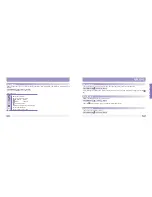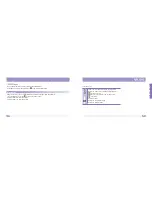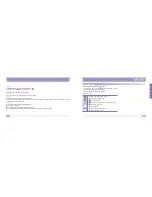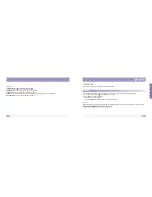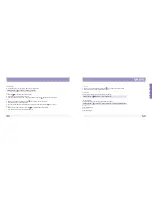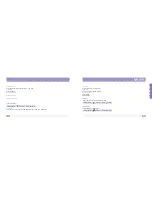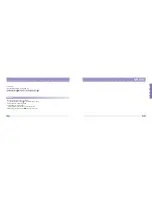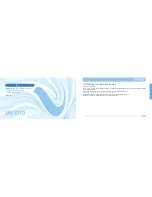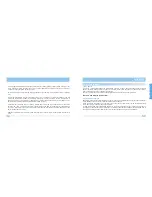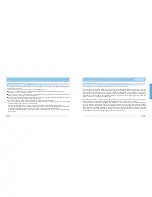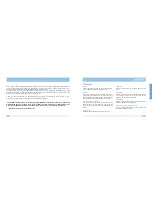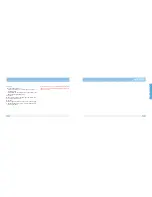
167
Care and Maintenance
Your phone is a product of superior design and craftsmanship and should be treated with care. Carefully read
the following information :
Keep it and all its parts and accessories out of small children's reach.
Keep it dry. Precipitation humidity and liquids contain minerals that will corrode electronic circuits.
Do not use or store it in dusty, dirty areas.
Do not store it in hot or cold areas. High or low temperatures can shorten the life of electronic devices,
damage batteries, and warp or melt certain plastics.
Do not store it in cold areas. When the phone warms up (to its normal operating temperature), moisture
can form inside the phone, which may damage the phone.
Do not drop, knock or shake it. Rough handling can break internal circuit boards.
Do not use harsh chemicals, cleaning solvents, or strong detergents to clean it. Wipe it with a soft cloth
slightly dampened in a mild soap and water solution.
Do not paint the phone. Paint can clog the devices moving parts and prevent proper operation.
Use only the supplied or an approved replacement antenna. Unauthorized antennas, modifications of
attachments could damage the phone and may violate regulations governing radio devices.
If the phone, battery, charger, or any accessory is not working properly, take it to your nearest qualified
service facility.
166
OTHER FUNCTIONS
Radio Frequency (RF) Signals
This VK 1010 model meets international standards for exposure to radio waves.
Your mobile phone is a radio transmitter and receiver. It is designed and manufactured not to exceed the
emission limits for exposure to radio frequency (RF) energy. These limits are part of comprehensive guidelines
and establish permitted levels of RF energy for the general population. Those guidelines are based on
standards that were developed by independent scientific organizations through periodic and thorough
evaluation of scientific studies. The guidelines include a substantial safety margin designed to assure the
safety of all persons, regardless of age and health.
The exposure standard for wireless mobile phones employs a unit of measurement known as the Specific
Absorption Rate, or SAR. Under the guidelines for your phone model, the SAR limit is 2.0 W/kg.
Tests for SAR are conducted in accordance with CENELEC
testing procedures using standard operating
positions with the phone transmitting at its highest certified power level in all tested frequency bands.
Although the SAR is determined at the highest certified power level, the actual SAR level of the phone while
operation can be well below the maximum value. This is because the phone is designed to operate at multiple
power levels so as to use only the power required to reach the network. In general, the closer you are to a
wireless base station antenna, the lower the power output of the phone.

